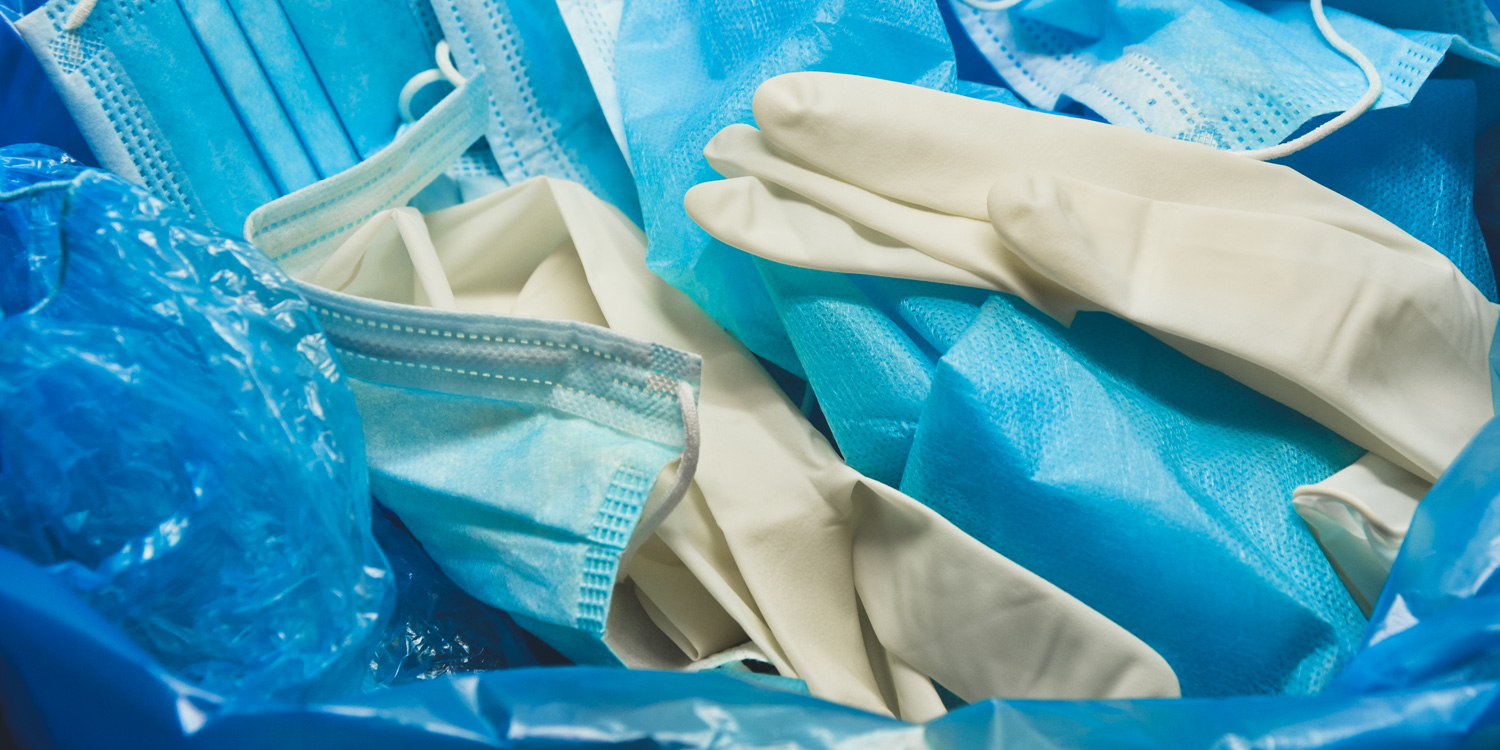Can healthcare’s plastic problem be fixed?
By Jason McBride | May 7, 2025

While plastic revolutionized medicine, new research shows it’s making us sick. It’s a slow and difficult process, but new alternatives are being developed.
Of all the modern threats that we currently face — climate catastrophe, pandemics, the second Donald Trump administration — plastic is one of the most pernicious. Producing the material pumps massive amounts of carbon into the atmosphere (close to 5 percent of global emissions), our oceans are drowning in more than 75 million tonnes of the stuff, and the tiny bits we call microplastics can now be found in every part of the human body.
But from the packaging our food comes in to the clothes on our backs to the components in our cars and phones, we can’t seem to live without plastic. And if you’ve been to a hospital lately, you’ll notice a tonne of plastic there too: PPE, syringes, catheters, IV and blood bags, the hygienic wrappers on surgical instruments. Even the terrible meals you get arrive on plastic trays, with plastic cutlery. In many ways, it is the ideal medical material — light, durable, sterile. And, to most people’s minds, it keeps us safe.
However, research increasingly shows that plastic is negatively affecting our health, and the medical world has begun the slow, difficult process of rethinking its reliance on the material.
Here, a look at some of the steps already being taken — and where we need to go next.
What is medical plastic doing to our bodies?
Every time you drink water, or eat food, or just simply breathe, micro- and nanoplastics are likely entering your body. In fact, the average person consumes an estimated 50,000 pieces of microplastics every year. But what do these plastics — specifically the ones in medical devices and products — do when they get into our lungs or colons? Are they really that harmful to our health? The short answer is: We don’t fully know.
“We’re just beginning to learn what the range of impacts are,” says Ted Schettler, a California-based science advisor for Health Care Without Harm. But plastics do have some indisputably negative effects: Animal studies have linked the material to reduced fertility and certain cancers, and Schettler has conducted damning research on polyvinyl chloride (PVC) use in medicine. The phthalates that make PVC soft and pliable wreak havoc on our hormones and are associated with a host of diseases: diabetes, obesity, testicular and breast cancer. Yet despite bans on other products containing this material, PVC is still found in IV bags, tubing, gloves and other items, and remains the most commonly used plastic in healthcare globally.
“There’s a pretty good string of evidence saying we should be getting away from phthalates in medical devices,” Schettler says. “The best way to do that would be to get away from PVC altogether and start using plastic polymers that don’t require the addition of those phthalates.” While several healthcare facilities around the world have taken steps toward a PVC phase-out, European countries are further ahead. In 2001, a NICU in a children’s hospital in Vienna was the first in the world to go PVC-free, and the EU added PVC to its Restrictions Roadmap in 2022.
Do we really need all these disposables?
Clinics and hospital operating rooms are awash in plastic, but is it all truly necessary? Schettler doesn’t think so. “There are so many opportunities to reduce non-essential uses of plastic,” says Schettler. The first places to look, he says, are in the non-medical services and products that are a part of most healthcare facilities: offices, building materials, furniture, food delivery.
And while plastic may be essential in, say, IV tubing, countless other medical products can be designed with little or no single-use plastic, such as basins, pitchers, sharps containers and pulse oximetry probes. Many healthcare facilities use disposable gowns and drapes, but traditionally such garments were laundered; returning to that practice could be a simple, inexpensive fix. As well, blue wrap, the familiar polypropylene used to keep surgical instruments sterile, could be replaced with cleanable, reusable hard cases that don’t need to be thrown away.
How can we deal with the “ick” factor?
Convenience and low cost aside, there’s another big reason for the popularity of plastic in healthcare: squeamishness. Most patients (and many healthcare workers) believe single-use, disposable products are more sanitary than reusable options. Similarly, recycling efforts are complicated by the fact that medical waste is generally viewed as unhygienic. But according to the World Health Organization, only 15 percent of the total waste generated by healthcare activities is actually hazardous. And there’s little, if any, data that indicates single-use products are in fact safer than ones that have been properly sterilized and reprocessed for additional use.
One Canadian startup, Halifax-based Aruna Revolution, is challenging this stigma by making completely compostable menstrual pads out of agricultural waste fibres. The aim is to create a circular solution: “The menstrual pads would go into the compost, turn into compost, turn back into the plant, and then the plant would be used to create more menstrual products,” says co-founder and CEO Rashmi Prakash. She hopes that Aruna’s products will change the view that blood is a bio-contaminant and pave the way for the material’s use in diapers, tissues and a wide array of medical products, from gauze to PPE. “It can be applied essentially to anything that uses a natural fibre,” Prakash says.
Another Canadian startup, Synoro Med, is in the early stages of developing an IV bag that could be used, re-sterilized and used again. Synoro Med’s founder Aditi Sitolay has frequently encountered concerns about hygiene too, but insists it’s a moot point. “Reusables are not new to healthcare,” she says. “A lot of surgical equipment is reusable. And if you go through the sterilization process it’s hygienic and safe.”
What does the future hold?
In 2022, the U.N. General Assembly voted to develop a legally binding treaty on plastic pollution by 2024. That goal proved to be too ambitious; talks in Busan, Korea stalled last fall. One sticking point in previous negotiations was an exemption for healthcare, something that more than 500 health professionals and organizations (including Health Care Without Harm) argued against. The talks will continue later this year.
But while we wait for an international treaty, there are still many healthcare facilities and workers taking action. In Quebec, for example, Saint-Jérôme Hospital deploys a machine that uses microwaves to disinfect medical waste, which is then shredded into confetti, reducing the volume generated by 80 per cent.
At another Quebec hospital, Montreal’s St. Mary’s, anesthesiologist Lyndia Dernis started a program in her OR to recycle plastic packaging without interrupting work flow. She has been pushing for other solutions throughout the facility, from re-using surgical tools to simply educating doctors on more judicious consumption.
“The best waste,” she says, “is the waste that doesn’t exist.”
To find out more about how innovators are tackling our plastic problem, listen to the latest episode of the MaRS podcast Solve for X: Innovations to Change the World.
Image source: iStock
 Jason McBride
Jason McBride